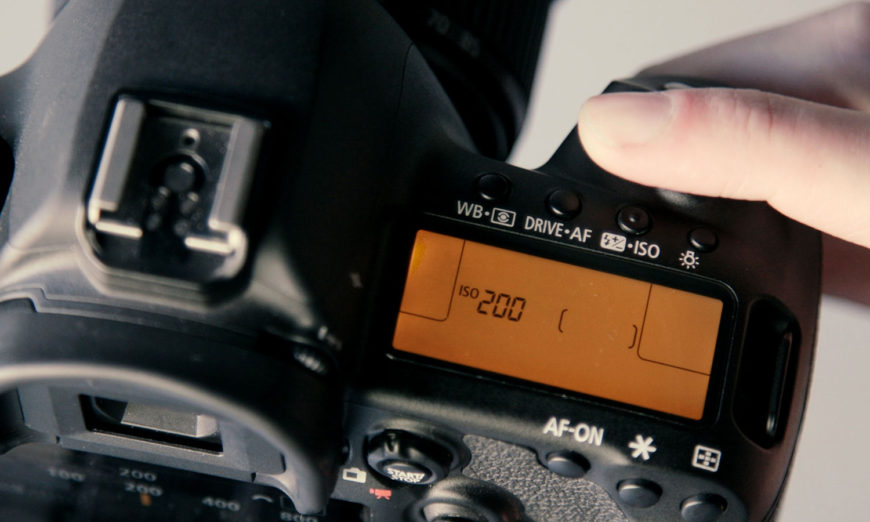Remember the day that you got your camera? Remember how excited you were? Maybe you were one of those folks who promised to read the manual front to back several times to ensure that you got the most from your new tool. Maybe you needed to get some shots right away and chose to put off learning what the camera delivers.
No problem. We’re going to look at 10 common features that our cameras provide that we may not be using.
Shooting Modes

Very often we do what we’ve always done, which is to shoot in the modes that we are most comfortable with. Many people say that they love shooting with their smartphone because the camera is really point and shoot and the photos look pretty darn good. Did you know that you can do the same thing with your bigger camera and that it is just as easy, but will give you image quality that buries what comes from the smartphone? Check your mode selector for an option labeled AUTO. Like your smartphone, it’s going to be perfect on the first shot over 90% of the time, but you will get a significantly better image with richer colour, lower digital noise and better sharpness. If your camera has no AUTO option, try P for Program.
Exposure Compensation

You know sometimes that you get a shot that’s a bit too dark or a bit too bright? There’s no need to pull out the manual and figure out a bunch of complex things. Exposure compensation is so easy! To make an image brighter, move the dial or selector towards the plus side and take another shot. Try +1 as a place to start. If the image is too bright to start out with, move the dial or selector towards the minus side and take another shot. Again, make your first attempt at -1. If you have a mirrorless camera or a DSLR with Live View, you can often see the effect of exposure compensation right on the LCD or in the EVF if your camera has one. There is no easier way to manage images that are too bright or too dark.
Auto ISO
 It’s no longer the days of film, where an entire roll had to be shot at the same ISO. Very often folks set an ISO and then forget it. Sometimes the ISO is set very low and there is camera shake in low light. Sometimes the ISO is set very high and there is lots of digital noise. Why not check your camera for the Auto ISO option. Like the fully automatic mode, it’s going to be right on the first shot well over 90% of the time. No fretting, no worrying and you are getting the benefit of the incredibly powerful computer that is built into your camera.
It’s no longer the days of film, where an entire roll had to be shot at the same ISO. Very often folks set an ISO and then forget it. Sometimes the ISO is set very low and there is camera shake in low light. Sometimes the ISO is set very high and there is lots of digital noise. Why not check your camera for the Auto ISO option. Like the fully automatic mode, it’s going to be right on the first shot well over 90% of the time. No fretting, no worrying and you are getting the benefit of the incredibly powerful computer that is built into your camera.
ISO To Freeze Action
Imagine that you go to your child’s play or their hockey game. You make some shots and they are exposed properly, but there is a lot of motion blur because the camera has to deal with very low light. Try setting your ISO to a high number such as 3200. The camera will then adjust the shutter speed up to compensate for the increased sensitivity and you will diminish the motion blur. This one simple setting can make the difference between well exposed blurs and well exposed shots that you will be proud off.
Fill-In Flash
 Those little flashes built into your camera or that clip on and came in the box don’t have much power and are small and kind of harsh. This is why so many people say that they dislike flash. There’s another use for this tool, that is really incredible. Your camera needs to be in either Program or Aperture Preferred mode for this to be automatic. When you have composed the shot and are ready to go, just push the button to pop up the flash. Now the flash will not try to be the dominant light source but will instead automatically go into what we call fill mode, or what I call “my friend Phil”. The camera exposes properly for the existing light and the little flash just fills in some shadows and puts some pop into the colours. The range is limited for the flash to about 12 feet, but the exposure is handled completely automatically by the camera.
Those little flashes built into your camera or that clip on and came in the box don’t have much power and are small and kind of harsh. This is why so many people say that they dislike flash. There’s another use for this tool, that is really incredible. Your camera needs to be in either Program or Aperture Preferred mode for this to be automatic. When you have composed the shot and are ready to go, just push the button to pop up the flash. Now the flash will not try to be the dominant light source but will instead automatically go into what we call fill mode, or what I call “my friend Phil”. The camera exposes properly for the existing light and the little flash just fills in some shadows and puts some pop into the colours. The range is limited for the flash to about 12 feet, but the exposure is handled completely automatically by the camera.
Choose Your Own Focus Point

Our cameras are amazing and the autofocus is really superb. However, the default mode is a type of Zone autofocus and while the camera will look for faces and strong contrast, the points it wants to focus on, may not match where you want focus to happen. If you use any modes other than Auto or Scene mode, you can choose which focus point to use and select it via a joystick or rocker. Now you get to decide the point of sharpest focus.
Scene Modes

Many cameras take the fully Automatic mode to new levels. We call these steps scene modes. While some cameras have a few icons on the mode dial to let you choose selected fully automatic scene modes, like portraits, sports or landscape, have you checked inside your camera’s scene settings? You might discover an entire additional set of super useful and very accurate scene modes. Options will include Night Skyline, Night Portrait, Children, Monochrome as well as a number of special filter looks. Lots of folks use filter enhancements on their smartphone images, but odds are decent that you may have much higher quality filters built right into your camera.
Video

It may sound a bit silly, but most all cameras have built in video and all of them will make much higher quality video than any handheld video camera. Nothing more to carry. Better lenses. Controllable depth of field. Definitely FullHD and maybe even UHD 4K. We know that while most all cameras today can shoot video, most users have never even tried it. Video is the fastest growing of the creative arts and you can make better video on your big camera than you can every make on your smartphone.
Continuous Shooting and Continuous Autofocus

Sometimes we want to be able to shoot a sequence of a moving subject that is also moving relative to the camera. Your camera most likely has two functions to make this simple. The first is called continuous autofocus. Unfortunately the names used by different camera makers are different to describe the same thing, but your camera manual will tell you how to switch from single shot AF to continuous. With continuous AF you just hold the shutter release down halfway and follow your subject keeping the focus points on the subject. Each time you squeeze the shutter, the image is already in focus with no lag because you are using continuous focus. Now add in the continuous drive mode and when you press the shutter release all the way, not only is the camera focusing, but it is also shooting as long as you hold the button down.
This can make the difference in getting the shot of your child’s slapshot, or that bird as it does a wingover and not getting it at all.
Change Lenses

This may sound silly since most of us made a camera choice based on being able to change lenses, but for some folks, they never take that step. The lens that came with your camera is likely to be very flexible and easy to use, but what if you want a wider field of view than your current lens can offer? What if you want to take a photo of that moose on the side of the road but don’t want to get to close in case you spook it or make it angry. Adding a different lens is a great way to allow you to change your viewpoint. Try not to overlap your existing lens range. Let’s say that you have an 18mm – 55mm lens that came with your camera. For a wider angle of view, consider adding something like a 10mm-18mm lens. To bring far away subjects closer, consider adding a 70mm– 300mm lens. Sometimes we just cannot zoom with our feet so never forget that you can change your entire view, just by changing the lens.
Conclusions
Our cameras today have tons more computing power than ever in our history. There’s no reason to keep treating them like they only do one thing. Check out these features and how to use them on your camera and you’ll find that the camera that you already have is pretty darn amazing.
If you have questions about this subject, please leave a comment on the Henry’s Blog.
Until next time, peace


